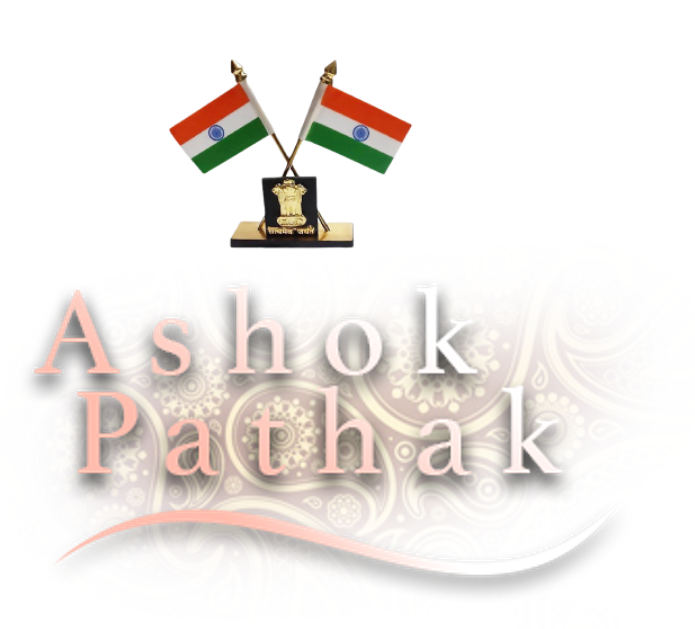~ Musical Heritage ~

The ancestry of the ‘Pathak gharana’ can be traced back to Pandit Gopal Nayak, who lived during the 12th century.
The Pathaks were earlier known as Mullicks, the title ‘Mullick’ was awarded to them during the Moghul period, and have a rare tradition of extraordinary talented musicians. They represent a musical lineage through generations of dhrupadists, sitar- and veena players.

Ashok Pathak’s grandfather Pandit Ramgovind Pathak, was a master of sitar and surbahar, honoured as the court musician of Murshidabad (West Bengal).
Pandit Ramgovind Pathak’s brother, Pandit Rameshwar Pathak, was an extraordinary sitar player honoured as the court musician of Darbhanga (North Bihar). His music influenced many musicians. (In fact Pt. Ravi Shankar has acknowledged Pandit Rameshwar Pathak as one of his own strong influences).
The late Pt. Balram Pathak, was acknowledged as one of the greatest sitar players of his time. He utilized the finer aspects and subtleties of the dhrupad and khayal gayaki vocal style in his own expressive playing on sitar. This was no doubt aided by his expertise and knowledge as an excellent vocalist. At a very young age he became the court musician for the Maharaja of Cossim-Bazar, Murshidabad, West Bengal.
The unique feature of the Pathak style; the ‘alaap’, ‘meends’, ‘murkis’, ‘gamaks’, ‘zamzamas’ and ‘ulta-zhala’ all create an atmosphere which is introspective and moving.
The gharana’s superb style of playing, especially the expression of the alaap in the dhrupad-dhamar method, gradually shapes the raga into a fantasy of sculptured sound thus conveys the audience to an inspiring, ethereal world.
This exceptional musical tradition of the Pathak family continued into the modern era. Today, the tradition of this invaluable ‘gharana’ is being ably carried on by Late Pandit Balaram Pathak’s son, Pandit Ashok Pathak.
Members of the Pathak Gharana
The Pathak Gharana is an illustrious family of Dhrupad singers, Sitar- and Surbahar players. A family which fully deserves our attention, not only for biographical and historical reasons but also because they are one of the most important musical families of India. They are a true representative of the organization of the Traditional Indian Musical Society.
The Pathak family originating from Balia (in the state Uttar Pradesh) and goes back to Pandit Kashinath Pathak (Dhrupadi & Binkar) and his son, Pandit Dinanath Pathak (dhrupadi & Binkar).
His son Pandit Bachu Pathak (Dhrupadi & Binkar) had three sons: Pandit Ganesh Pathak the eldest (a great Drupad singer and Binkar), Pandit Babu Nanadan Pathak (Dhrupad singer) and Pandit Ram Govind Pathak, father of Pandit Balaram Pathak, an excellent Dhrupad singer, Sitar- and Surbahar player. Pt. Balaram Pathak left Balia for Kolkata (Murshidabad) where he became court musician of Raja Kamala Ranjan Roy of Kashim Bazar.
Pandit Ram Govind Pathak died in 1948 while Balaram Pathak was barely 24 years old.
A second branch of this renowned family goes back to Pandit Raj Kumar Pathak (founder of Darbhanga Sitar Gharana) who had a son, Pandit Apooch Pathak (sitar) whose son Pandit Rameshwar Pathak (court musician of Darbhanga State) was one of the greatest Sitar players of the beginning of the 20th century (a statement corroborated by many artists among whom Ravi Shankar).

In this gharana Pandit Suddin Pathak (uncle of Rameshwar and Ramgovind Pathak) was the most talented sitar- and surbahar player.
This extraordinary family organization, cemented by music, proliferates not only because of marriage ties but also because of the deep ties generated by the Guru Sisya Parampara, the unique relationship between master and disciple. Thus, Mrs. Balaram Pathak is the daughter of Pandit Chotte Narayan Malik, a Pakhawaj player who had been a disciple of the Pakhawaj player Pandit Dewkinandan Pathak.
At last, to add if need be three more petals to this infinite garland of great musicians born of the same family flower, let us recall that Pandit Sya Ram Tiwari undoubtedly the greatest Dhrupad singer of contemporary India, followed by Pandit Ram Chatur Malik and Pandit Bidur Malik (who complete this winning vocal Dhrupad ’tierce’) all belong to the same Gharana (traditional school) as the Pathak Family.
The family is mentioned in all the Hindi Works relating to biographies of Musicians and History of Indian Music (like ‘Hamare Sangeet Ratna’ by L.N. Garg, ‘Bharatiya Sangeet Kosh’ by V.R. Chaudhury, and ‘Sitar Marg’ by Shipad Bandyopadhyaya).
In the family of Balaram Pathak, music was perpetually going on. Besides his daily Sitar and Surbahar practice, Panditji was teaching and playing with his four sons; the Sitar and Dhrupad Surbahar player Ashok Pathak, the vocalist Pramod Pathak, the Tabla player Vinode Pathak and Binay Pathak a composer and professional Harmonium player.
